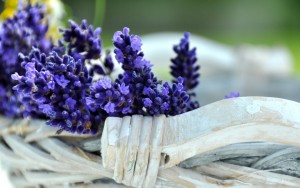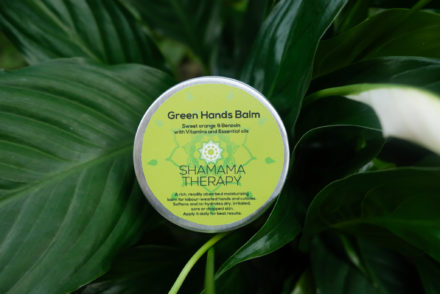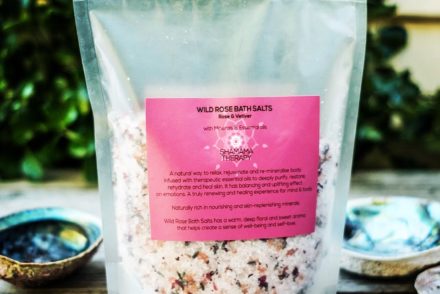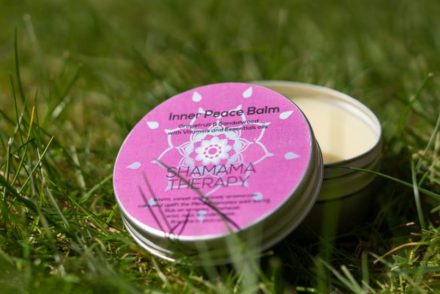Marguerite Maury understood and intuitively knew that only individual approach to each of the person and preparing a unique blend in the world of aromatherapy could support the healing process. She was a biochemist and beautician, who spoke about external application of essential oils on the skin, blended in vegetable carrier oil:
“ Massage of the conjunctive, neuro-mascular or soft tissue pave the way admirably for the penetration of odoriferous sunstances, and the resultant rejuvenation… It is therefore clear that preparations with a basis of essential oils with vegetable oils used as carriers will be of great assistance”. Maury(1964) as cited by Battaglia (2003)
Marguerite Maury had profound understanding of people. It made her realise that the physical and emotional properties of essential oils correspond with unique needs of each person. The aromatic properties of pure, natural essential oils are a catalyst for change in the human mind and body. When chosen in an appropriate manner, they can enhance an individual’s innate healing process. It is an intuitive, holistic and naturalistic way of comprehending the human spirit. Maury said:
“To reach the individual we need an individual remedy. Each of us is a unique message. It is only the unique remedy that will suffice. We must, therefore, seek odoriferous substances which present affinities with the human being we intend to treat, those which will compensate for his deficiencies, and those which will make his faculties’ blossom.” (Marguerite Maury 1964)
Essential Oils Synergy
Synergy – the combined power of two or more agents or substances so that their combined effect is greater than the sum of their individual effects.
The aim of a blend is to produce a synergy – a harmonious combination of oils which has properties to suit the physical and psychological symptoms identified and which has a pleasant aroma. It is important to not only focus on the presenting symptoms, but to consider all the possible psychological factors causing imbalance in general health of a client. (Battaglia 2003)
Top, Middle, and Base Notes
They tend to be light, fresh and uplifting in nature. Top notes are generally highly volatile, fast acting, give the first impression of the blend. Typical top notes are citrus essential oils such as Lemon, Lime, Sweet orange, Mandarin, Petitgrain, Grapefruit, Lemongrass.
Middle notes
They give body to the blend and have a balancing effect. The smells o f middle notes are not always immediately evident and may take a couple of minutes to come into their own right and are normally warm and soft fragrances. Middle notes are mosty found in essentials oils distilled from leaves and herbs. The following essential oils among others, are considered middle notes: Geranium, Chamomile, Fennel, Juniper, Lavender, Marjoram, Pine, Ginger, Cardamom, Rosemary.
f middle notes are not always immediately evident and may take a couple of minutes to come into their own right and are normally warm and soft fragrances. Middle notes are mosty found in essentials oils distilled from leaves and herbs. The following essential oils among others, are considered middle notes: Geranium, Chamomile, Fennel, Juniper, Lavender, Marjoram, Pine, Ginger, Cardamom, Rosemary.
Base notes
They have profound influence on the blend as a whole. These fragr ances are normally intense and heady. They are normally rich and relaxing in nature. They have a sedative and calming effect.This includes essentials oils such as Vetiver, Sandalwood, Benzoin, Myrrh, Patchouli, Frankincense, Clary sage, Myrrh, Cedarwood.
ances are normally intense and heady. They are normally rich and relaxing in nature. They have a sedative and calming effect.This includes essentials oils such as Vetiver, Sandalwood, Benzoin, Myrrh, Patchouli, Frankincense, Clary sage, Myrrh, Cedarwood.
Lavabre suggests the following ratios:
Top notes: 20-30%
Middle notes : 40-80%
Base notes: 10-20%
It is important to take into account everything that is relevant physically, emotionally and spiritually at that moment and to create a unique blend for the individual that addresses the needs of client’s body, mind and spirit. Depending on an individual’s needs, essential oils can be used to soothe, uplift, energise, relax or stimulate.
Lavabre says:
“when creating a blend, first look at the purpose of the blend. A blend to fight an infection will be very different from one to soothe emotional wounds or to relief stress” (Lavabre 1997)
The blending aspect of aromatherapy comes from knowing the subtle differences in essential oils that are attributable to thousands of aroma chemicals, and how these chemical constituents affect the human body. Each of us carries a different story. There are subtle differences in human beings that are attributed to thousands of memories and emotions, and how these affect human behaviour, state of their body and mind.
References
Battaglia, S. (2003) The complete guide to aromatherapy 2nd ed. The International Centre of Holistic Aromatherapy, Australia
Lavabre, M. (1997) Aromatherapy workbook, Healing Art Press, USA
Marguerite, M. (1964) Marguerite Maury’s guide to aromatherapy: The secret of life and youth The C.W. Daniel Company Limited, Great Britain. Cited in: Battaglia, S. (2003) The complete guide to aromatherapy2nd ed. The International Centre of Holistic Aromatherapy, Australia
Marguerite, M. (1964) Marguerite Maury’s guide to aromatherapy: The secret of life and youth. First published in French as Le Capital Jeunesse in 1961. English version published by The C.W. Daniel Company Limited, Great Britain.





